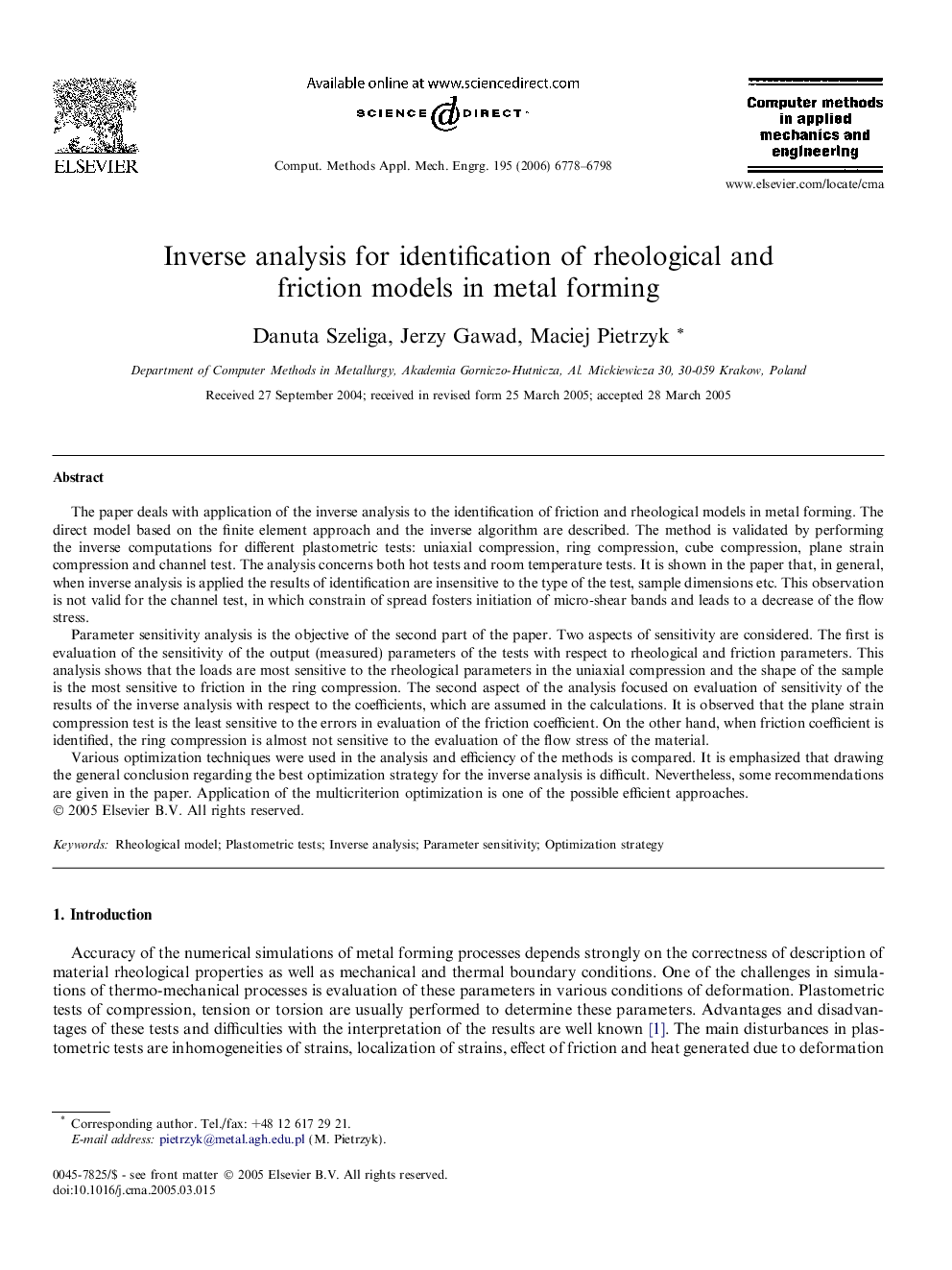| Article ID | Journal | Published Year | Pages | File Type |
|---|---|---|---|---|
| 500194 | Computer Methods in Applied Mechanics and Engineering | 2006 | 21 Pages |
The paper deals with application of the inverse analysis to the identification of friction and rheological models in metal forming. The direct model based on the finite element approach and the inverse algorithm are described. The method is validated by performing the inverse computations for different plastometric tests: uniaxial compression, ring compression, cube compression, plane strain compression and channel test. The analysis concerns both hot tests and room temperature tests. It is shown in the paper that, in general, when inverse analysis is applied the results of identification are insensitive to the type of the test, sample dimensions etc. This observation is not valid for the channel test, in which constrain of spread fosters initiation of micro-shear bands and leads to a decrease of the flow stress.Parameter sensitivity analysis is the objective of the second part of the paper. Two aspects of sensitivity are considered. The first is evaluation of the sensitivity of the output (measured) parameters of the tests with respect to rheological and friction parameters. This analysis shows that the loads are most sensitive to the rheological parameters in the uniaxial compression and the shape of the sample is the most sensitive to friction in the ring compression. The second aspect of the analysis focused on evaluation of sensitivity of the results of the inverse analysis with respect to the coefficients, which are assumed in the calculations. It is observed that the plane strain compression test is the least sensitive to the errors in evaluation of the friction coefficient. On the other hand, when friction coefficient is identified, the ring compression is almost not sensitive to the evaluation of the flow stress of the material.Various optimization techniques were used in the analysis and efficiency of the methods is compared. It is emphasized that drawing the general conclusion regarding the best optimization strategy for the inverse analysis is difficult. Nevertheless, some recommendations are given in the paper. Application of the multicriterion optimization is one of the possible efficient approaches.
